Mar
10
2020
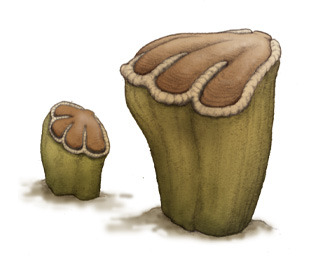 What does an extinct mollusk have to do with the Moon? This is one of those amazing science stories that ties together multiple disciplines and lines of evidence into one elegant narrative. In this case a detailed analysis of a 70 million year old mollusk shell has given scientists a critical piece of information that will help them model the Earth-Moon system.
What does an extinct mollusk have to do with the Moon? This is one of those amazing science stories that ties together multiple disciplines and lines of evidence into one elegant narrative. In this case a detailed analysis of a 70 million year old mollusk shell has given scientists a critical piece of information that will help them model the Earth-Moon system.
Let’s start with the Moon – astronomers know that the Moon is moving farther away from the Earth at a constant rate, 3.82 centimeters per year. We can precisely measure this because the Apollo missions left corner reflectors on the surface of the Moon, and we can shoot lasers off those reflectors and measure the round-trip travel time. Because scientists have also precisely measured the speed of light, we can use this round-trip time to calculate the exact distance between the laser on Earth and the reflector on the Moon.
Why is the Moon moving away from the Earth? In a word – tides. Tidal forces from nearby large objects causes a bulge to form. We are most familiar with this phenomenon because of the bulge in the ocean caused mostly by the Moon (and to a lesser degree the Sun) which we experience locally as a rising and falling of the sea. The tidal bulge on the Earth is slightly ahead of the Moon in its orbit, because the Earth is spinning faster than the Moon. This leading bulge tugs slightly on the Moon, accelerating it into a higher orbit farther from the Earth. This represents a transfer of momentum from the Earth to the Moon via gravity, which not only moves the Moon farther away, but slows down the rotation of the Earth (and the conservation of angular momentum is obeyed).
Continue Reading »
Mar
09
2020
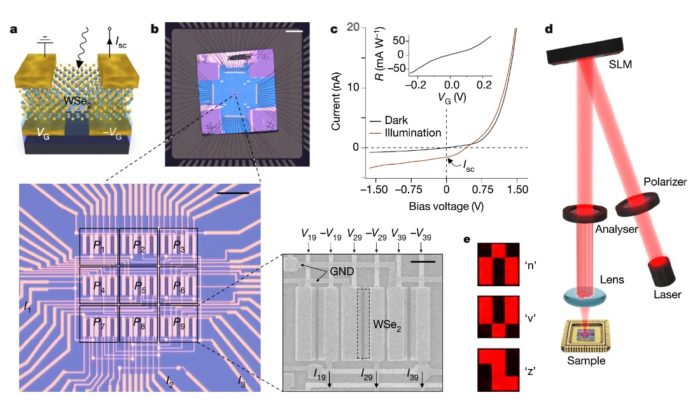 A new study published in Nature details the use of a neural network on a 2-dimensional computer chip that by itself can be trained to recognize specific images within nanoseconds. This is more of a proof of concept than something with direct immediate applications, but let’s talk about that concept.
A new study published in Nature details the use of a neural network on a 2-dimensional computer chip that by itself can be trained to recognize specific images within nanoseconds. This is more of a proof of concept than something with direct immediate applications, but let’s talk about that concept.
To back all the way out – evolution represents hundreds of millions of years of tinkering with multi-cellular structures, and even longer when talking about biochemistry. This is a natural laboratory that has developed some elegant designs, and at the very least can serve as a useful source of inspiration for modern technology. That is the concept of neural networks, designing computers to work more like a vertebrate brain. Specifically, the “neurons” in a neural network are not just binary, on or off, but rather can fire with various degrees of strength. Further, their firing affects the activity of those neurons they are connected to. Computer hardware with networks designed on these basic principles are called artificial neural networks (ANN). They hold the promise of not only faster and more powerful computing, but are designed to learn (which is why they are so often associated with artificial intelligence).
Another principle at work here is top-down vs bottom-up processing, another concept that has increasingly been incorporated into AI. If we go all the way back to the early days of AI the basic idea was to create high level computer intelligence that could solve problems with the top down, with deep understanding. That goal, now referred to as general AI, is still a ways off. But meanwhile AI has advanced considerably through more of a bottom-up approach, using algorithms to sift data in increasingly sophisticated and adaptable ways. We now have deep learning AI and other specific processes that can produce impressive results without any general AI “understanding” what it is doing.
One question is – will we be able to build a general AI out of these limited AI components? Is it just a matter of building in enough sophistication and complexity? We won’t know until we do it, but if living organisms are any guide, I think there is reason to be positive. Specifically – that is basically how our brains work.
Continue Reading »
Mar
05
2020
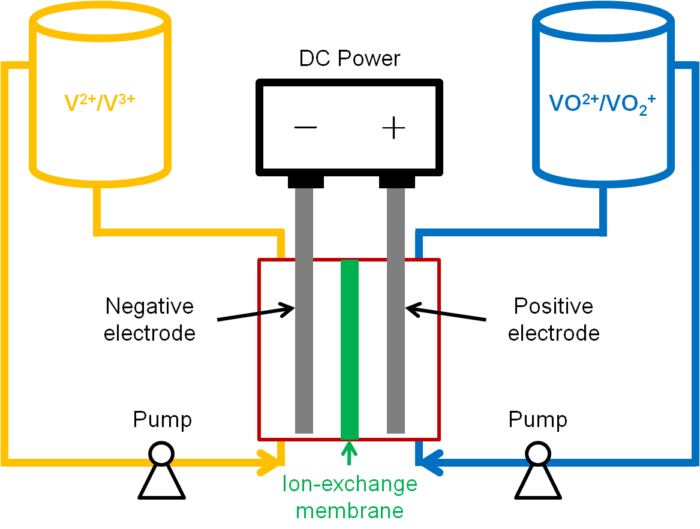 It’s important to recognize that we currently do not know with any confidence the path forward that our energy infrastructure will take. This is why we have to spread our bets out on as many technologies as possible – we don’t know which ones will be the most successful. Many people place their hopes on battery technology, and there is no doubt that batteries are a great energy storage medium and will play a critical role in our energy future. But batteries are not a simple panacea, and we may run into important limits. This is why we need new battery technology.
It’s important to recognize that we currently do not know with any confidence the path forward that our energy infrastructure will take. This is why we have to spread our bets out on as many technologies as possible – we don’t know which ones will be the most successful. Many people place their hopes on battery technology, and there is no doubt that batteries are a great energy storage medium and will play a critical role in our energy future. But batteries are not a simple panacea, and we may run into important limits. This is why we need new battery technology.
The demand for batteries is likely to increase significantly. Electric cars depend on batteries, and therefore putting millions of EVs onto the road means necessarily putting millions of batteries on the road as well. Also, batteries are one possible solution to home and grid energy storage, which will be necessary if we want to maximize renewable energy sources like wind and solar. Current lithium-ion battery tech is great, and is getting incrementally better all the time, but it has limitations. One significant limitation is the availability of lithium and cobalt which are necessary for their manufacture.
Cobalt, for example, comes mostly from the DRC, an unstable country, and it comes mostly as a byproduct of copper and nickle mining. Global supplies are expected to fall short of global demand, and if there is a surge in Li-ion batteries this will only get worse. Lithium is more complicated, and we are not really sure what the worldwide supply is. For now there is no problem, but there is widespread concern that lithium supply will not keep up with demand as EVs take to the streets. We also do not currently have the ability to recycle lithium into a pure enough state to reuse in batteries.
What battery tech is on the horizon that will potentially change the game for batteries? For now, continued incremental improvements in Li-ion battery technology are important. We need to squeeze as much function out of the raw materials as possible, with greater capacity, and longer charge-discharge lifespans. Right now Tesla boasts million-mile batteries for its EVs. Increasing the lifespan further will decrease the need for new batteries as replacements. Batteries from retired EVs can also be repurposed for grid storage, where it wont’ matter if their range has decreased.
Continue Reading »
Mar
03
2020
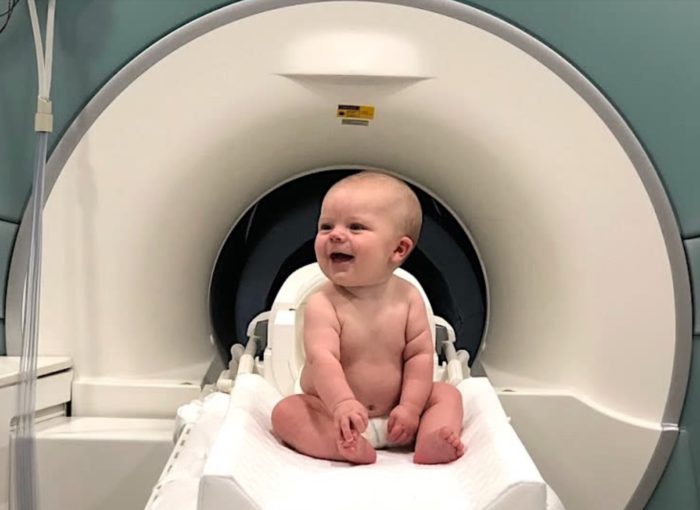 Most regular readers of this blog should know by now that the answer to nature vs nurture is – yes. Both are involved in neural development and function, and interact in a complex way. Further, while I still find myself reverting to it on occasion, the metaphors of hardware and software don’t quite work with the brain. Rather, the brain is wetware, which is a dynamic combination of both. A new study, looking at the visual cortex of young newborns, adds more information to this basic understanding.
Most regular readers of this blog should know by now that the answer to nature vs nurture is – yes. Both are involved in neural development and function, and interact in a complex way. Further, while I still find myself reverting to it on occasion, the metaphors of hardware and software don’t quite work with the brain. Rather, the brain is wetware, which is a dynamic combination of both. A new study, looking at the visual cortex of young newborns, adds more information to this basic understanding.
Generally what people are trying to refer to with the term “hardwired” are patterns in the human brain determined largely by genetics, rather than any environmental input. But the fundamental misunderstanding that comes along as baggage with that metaphor is the notion that genes carry a blueprint of the brain – they don’t. They encode rules for how to develop a brain, and those rules include environmental input. So you cannot disentangle the two. Even newborns developed in an environment – the environment of the womb, with the brain also receiving feedback from the body of the fetus itself.
Newborns do come out of the womb with some behaviors, albeit a limited basic repertoire. They need to sleep, feed, and interact. They have limited movement, hearing, and vision, and a similarly limited range of emotions and mental states. But perhaps their biggest behavioral ability is learning – they are sponges that absorb information from their environment. The question is – how much of their trajectory from this infantile state to an adult state is determined by the pathways that are already laid out in their brains, and how much is determined by their environment? Both clearly have a dramatic effect, and interact with each other.
The purpose of the current study was to investigate what the visual cortex of newborns is like, and how they compare to adults. Vision is a pretty basic function, and we would expect the brain to be primed for it. We also know that deprived of visual stimulation, this part of the brain will fail to develop, or will be coopted for other uses. Using fMRI the researchers found that the basic adult structure of the visual cortex of infants was already present. We knew from prior research that there are two brain regions that talk to each other and are involved in facial recognition. Similarly, there are two brain regions that are wired together and function to visualize places. In infants (average age 27 days), the two face regions were active and synchronized together, while the two place regions were also active and synchronized together. This pattern was identical to that of adult brains – although not as robust.
Continue Reading »
Mar
02
2020
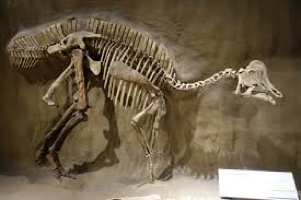 Another paper has been published in the simmering controversy over whether or not proteins, and even DNA, can survive millions of years in well-preserved dinosaur (non-avian dinosaurs, that is) fossils. The paper looks at cartilage from a duck-billed dinosaur, a young Hypacrosaurus stebingeri. The authors claim:
Another paper has been published in the simmering controversy over whether or not proteins, and even DNA, can survive millions of years in well-preserved dinosaur (non-avian dinosaurs, that is) fossils. The paper looks at cartilage from a duck-billed dinosaur, a young Hypacrosaurus stebingeri. The authors claim:
“…microstructures morphologically consistent with nuclei and chromosomes in cells within calcified cartilage. We hypothesized that this exceptional cellular preservation extended to the molecular level and had molecular features in common with extant avian cartilage. Histochemical and immunological evidence supports in situ preservation of extracellular matrix components found in extant cartilage, including glycosaminoglycans and collagen type II. Furthermore, isolated Hypacrosaurus chondrocytes react positively with two DNA intercalating stains.”
Let me say right away that these claims are controversial, but what would they mean if true? If we could examine the structure of proteins and DNA from >65 million years ago, in well-preserved dinosaur fossils, then the world of molecular biology would extend back to that era. Molecular examination has had a significant impact on paleontology – but it has limits. So far the oldest DNA sequenced from a fossil is from a 700,000 year old horse frozen in ice. The oldest protein so far confirmed is from a rhino 1.7 million years old. This means that if the current claims are true, DNA can survive in fossils 100 times longer than the current record would indicate.
This is also not the only source of information from which to estimate the lifespan of DNA. Researchers have examined DNA from Moa specimens in New Zealand, over a span of about 8,000 years. This allowed them to estimate the half-life of DNA, the time over which about half the bonds would be broken. Their estimate – 521 years. This means that all the chemical bonds in a DNA molecule would be gone after 6.8 million years, but having any fragments along enough to sequence would be gone after about one million years. This aligns nicely with the evidence from actual fossils. So claiming DNA from >65 million years would be extraordinary, to say the least. This is why most scientists remain skeptical of these claims.
Continue Reading »
 What does an extinct mollusk have to do with the Moon? This is one of those amazing science stories that ties together multiple disciplines and lines of evidence into one elegant narrative. In this case a detailed analysis of a 70 million year old mollusk shell has given scientists a critical piece of information that will help them model the Earth-Moon system.
What does an extinct mollusk have to do with the Moon? This is one of those amazing science stories that ties together multiple disciplines and lines of evidence into one elegant narrative. In this case a detailed analysis of a 70 million year old mollusk shell has given scientists a critical piece of information that will help them model the Earth-Moon system.

 It’s important to recognize that we currently do not know with any confidence the path forward that our energy infrastructure will take. This is why we have to spread our bets out on as many technologies as possible – we don’t know which ones will be the most successful. Many people place their hopes on battery technology, and there is no doubt that batteries are a great energy storage medium and will play a critical role in our energy future. But batteries are not a simple panacea, and we may run into important limits. This is why we need new battery technology.
It’s important to recognize that we currently do not know with any confidence the path forward that our energy infrastructure will take. This is why we have to spread our bets out on as many technologies as possible – we don’t know which ones will be the most successful. Many people place their hopes on battery technology, and there is no doubt that batteries are a great energy storage medium and will play a critical role in our energy future. But batteries are not a simple panacea, and we may run into important limits. This is why we need new battery technology. Most regular readers of this blog should know by now that the answer to nature vs nurture is – yes. Both are involved in neural development and function, and interact in a complex way. Further, while I still find myself reverting to it on occasion, the metaphors of hardware and software don’t quite work with the brain. Rather, the brain is wetware, which is a dynamic combination of both.
Most regular readers of this blog should know by now that the answer to nature vs nurture is – yes. Both are involved in neural development and function, and interact in a complex way. Further, while I still find myself reverting to it on occasion, the metaphors of hardware and software don’t quite work with the brain. Rather, the brain is wetware, which is a dynamic combination of both.  Another paper has been published
Another paper has been published




